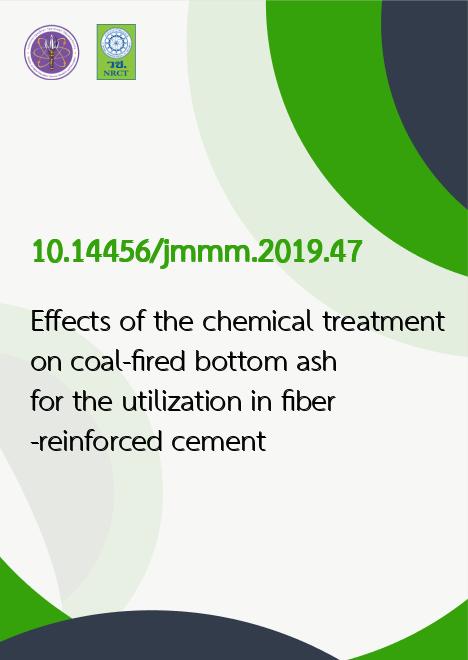
|
Effects of the chemical treatment on coal-fired bottom ash for the utilization in fiber-reinforced cement |
|---|---|
| รหัสดีโอไอ | |
| Creator | Passakorn SONPRASARN |
| Title | Effects of the chemical treatment on coal-fired bottom ash for the utilization in fiber-reinforced cement |
| Contributor | Parinya CHAKARTNARODOM, Pitcharat INEURE, Wichit PRAKAYPAN |
| Publisher | Metallurgy and Materials Science Research Institute Chulalongkorn University |
| Publication Year | 2562 |
| Journal Title | Journal of Metals Materials and Minerals |
| Journal Vol. | 29 |
| Journal No. | 4 |
| Page no. | 55-60 |
| Keyword | Chemical treatment, Coal-Fired bottom ash, Fiber-cement, Heat of hydration |
| URL Website | http://ojs.materialsconnex.com/index.php/jmmm/article/view/488 |
| Website title | Effects of the chemical treatment on coal-fired bottom ash for the utilization in fiber-reinforced cement composites | Sonprasarn | Journal of Metals, Materials and Minerals |
| ISSN | 8576149 |
| Abstract | Around 3 million tons of municipal solid wastes called bottom ash (BA) are produced annually from the coal-fired power plants and it is still much underutilized in Thailand. Hence, the increasing usage of BA in industrial scale is necessary to limit the environmental impacts from landfilling of those by-product. Using of BA in fiber cement (FC) manufacturing seems to be a promising one. However, several negative effects regarding the extremely high water content from the fiber-cement forming process (Hatschek process) and the BA characteristic (the creation of bubble network) need to be eliminated. Both mentioned inferiors significantly reduce the cement hydration mechanism leading to remarkable reductions of set and hardened performances of fiber cement. Therefore, chemical treatment (CT) was introduced to boost up the hydration kinetic and characterized via the relevance of higher heat of hydration. Additionally, scanning electron microscope (SEM) was used to reveal the beneficial effects of treated BA through the microstructures. The results showed the chemically treated BA improve kinetic of hydration reaction was from the modification of BA surface. |
